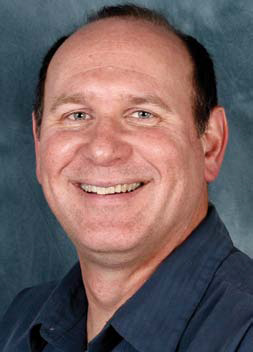Is ‘Avid Everywhere’ a Reality?

Jay Ankeney
The annual toboggan ride toward the 2014 NAB Show in April has begun.
At last year’s convention in Las Vegas the new president and CEO of Avid, Louis Hernandez Jr., kicked off their press conference by saying, “I hope you guys are ready to get excited!” Then he unveiled the largest slate of introductions this post-production paradigm had ever unleashed in a single year. There were many new features included in the latest Media Composer 7 software, but key among them was “Avid Everywhere,” which Hernandez described as “a concept that has been shaping our product strategy.”
Now, almost a year later, it’s time to find out how many of the promises made proved to be promises kept.
“It boils down to our vision of how to connect media professionals with each other in a more efficient and collaborative way,” said Dana Ruzicka, vice president of segment and product marketing for Avid. “We see a major transition in our industry, including the move from tape to file-based and IT-based environments, and also a change in the way our customers monetize their media.”
For those not savvy about marketing speak, that last point refers to how we turn a buck out of the products we produce. Just as the music industry has come to terms with their fans abandoning physical media, video pros are learning to cope with the explosion of methods by which their video creations get delivered.
“Just a few years ago, it was the broadcaster who determined when, where and how their shows would be consumed,” Ruzicka said. “Now the challenge is creating all the different versions the new distribution channels require to get a given source of content to the wide spectrum of platforms that viewers are adopting. After all, that’s how you make money in today’s market.”
The professional video industry's #1 source for news, trends and product and tech information. Sign up below.



Louis Hernandez Jr.Dana RuzickaDoug Hansel Sr. That’s the vision behind Avid Everywhere. “The core of it is what we call a ‘common services’ platform,” Ruzicka said. “This ties together the Media Composer creation system with a more automated, mechanized way to distribute it to the value chain and leverage other technologies like analytics to improve the process within our solutions portfolio.”
‘ONE FOR ALL’
MarketSpeak. Don’t ya just love it? The idea of Avid Everywhere starts with the common indexing of all the accessible media and its associated metadata so everyone in the production circuit can access it. Think of it as “all for one making one for all.”
A starting point is Avid’s Interplay Central common playback service that can make programs held on Avid’s MAM (media asset management) or ISIS family of shared storage systems and making them available throughout the workflow to create deliverable results to mobile, home, business or broadcast customers. Add to this the cloud-based collaboration of Interplay Sphere, and the potential of digital production leaves the limitation of studio walls in the dust trail of history.
So what part of the “Avid Everywhere” concept is already a reality? “The media indexing from that Interplay playback engine is available today,” Ruzicka said, “with more services coming online throughout 2014. The key differentiator, however, is the underlying common services platform at the heart of Avid Everywhere.”
But the ballroom where most Avid editors dance is the stage of their Media Composer NLE, and its new version 7 software has amped up the music. Doug Hansel Sr., segment and product marketing manager of pro video for Avid, told me of a company that is currently spending millions of dollars shipping hard drives around the client-producer-facility-studio maelstrom and they have been working with Avid to cut their bottom line by realizing remote streaming distribution from Avid’s new Interplay Sphere.
Several new features on Media Composer 7 have been facilitating that production. As one of the product designers of this new software, Hansel began with the new background processing and dynamic media folders features. “This benefits from a plugin architecture for our Avid Media Access (AMA) instant media link system,” he said. “That way, if a company like Canon comes out with a new metadata format or video codec for their next camera, a simple plugin will let AMA instantly access that footage.”
This will be crucial to handle the exploding volume of digital video shoots since directors have moved away from shouting “cut” before resetting a scene. The resultant continuous recordings can now be placed in dynamic media folders for transcoding or archiving.
NO INTERFERENCE
“It’s like a ‘watch folder’ system where the operator designates any number of tasks to be carried out in the background without interfering with the operation of the Media Composer itself,” he said.
Then, in the dawning era of 4K footage acquisition, Media Composer 7 gives us Frame Flex, a process whereby multiple HD images can be extracted from a single high-resolution frame. The system handles this as a real-time effect rather than creating new media, so the original framing box can be changed at any time.
“Also, to support these higher-resolution formats, Media Composer 7 incorporates a set of new color management tools that let us apply LUTs [look-up tables] to a raw recording,” Hansel said. “”You may want to shoot in Log-C, but view the footage in Rec 709 during post, and this feature lets you automatically apply the correct LUT or CDL [Color Decision List] so editors can concentrate on their storytelling.”
Audio has not been disregarded. The audio waveform display in Media Composer 7 is now cached, so it is instantly available every time a file is called up. This can now be left on permanently without having to scroll around to find it.
More crucially, perhaps, in this era of Commercial Advertisement Loudness Mitigation (CALM) legislation, Media Composer has now been given a master audio fader that lets you apply multiple forms of Real Time AudioSuite plug-ins across the entire output.
From Hansel’s perspective a premier feature of Media Composer 7 is its ability to handle not just file-based input, but file-based output to facilitate the AS-O2 MXF mastering toolkit for works in progress and AS-11 playout format compliance that has been promoted by the Advanced Media Workflow Association.
“These application specifications create a bundle that contains the media essence and the metadata that determines how to play the media back,” Hansel described. “The idea is that one file structure can be modified for various deliverable formats, and, as this progresses, we will even be able to include different versions of a single cut.”
That will let you eliminate the crashes from the film “Airplane” for in-flight presentation or include a Spanish soundtrack for alternative language broadcasts.
“Not all of this has been implemented yet, but you can consider the potential of this kind of file-based output formatting,” Hansel said. “In the U.K., the Digital Production Partnership has already provided a roadmap toward developing what they call DPP AS-11 compliant files. Incorporating these concepts into the Media Composer software in the near future will make file-based output more amenable to the delivery specifications required by the growing competition of clients.”
Jay Ankeney is a freelance editor and post-production consultant in Los Angeles. Write him atJayAnkeney@mac.com.
